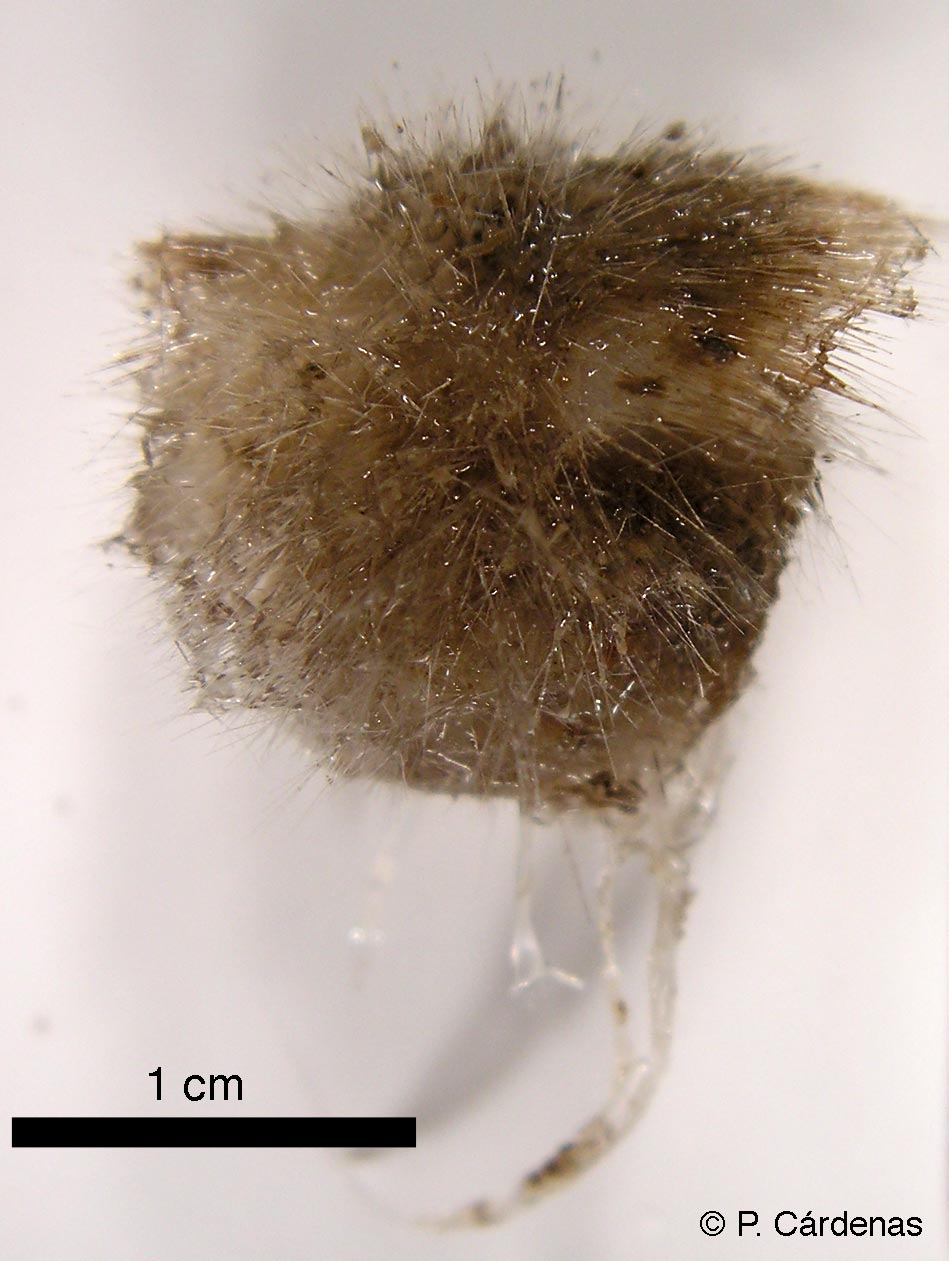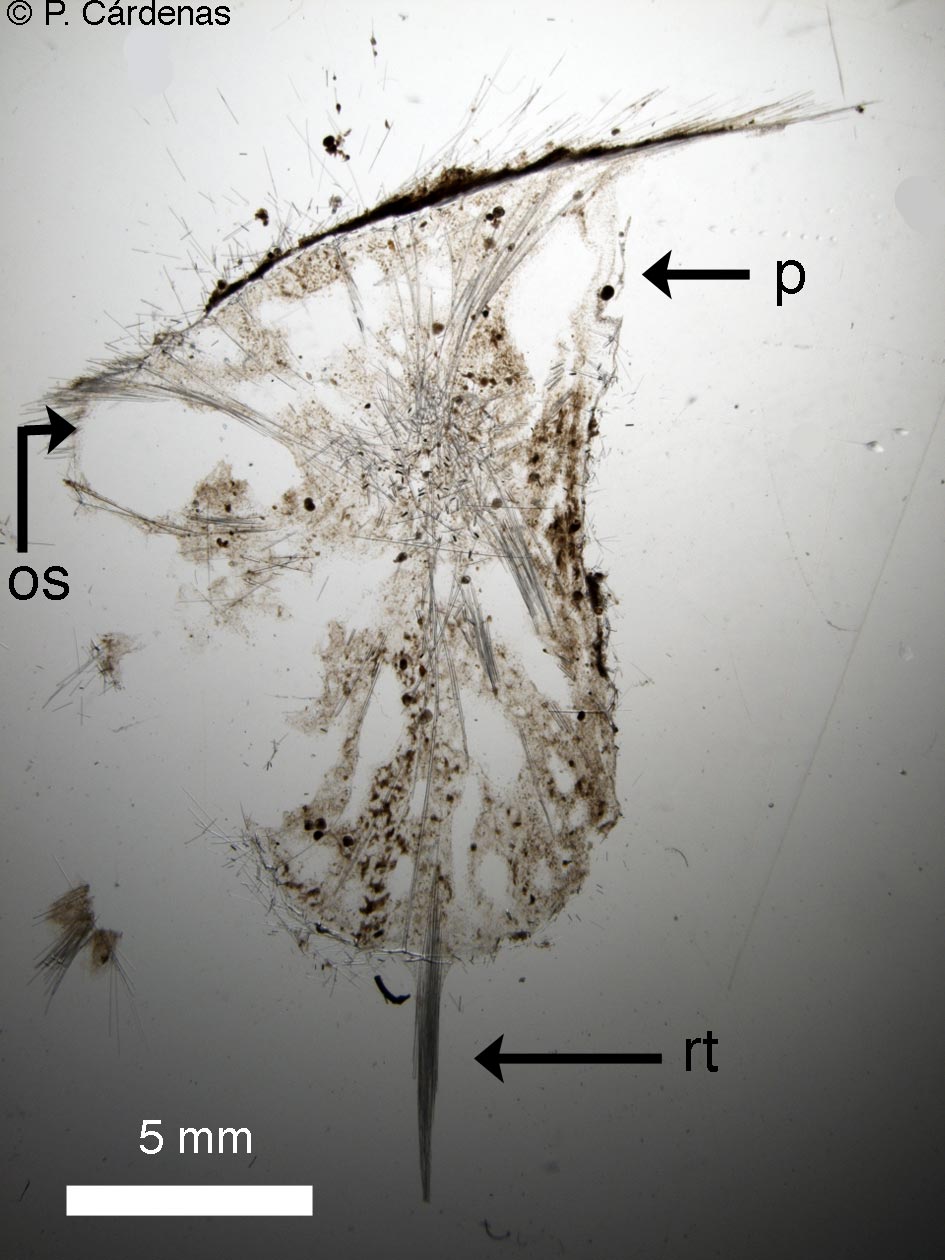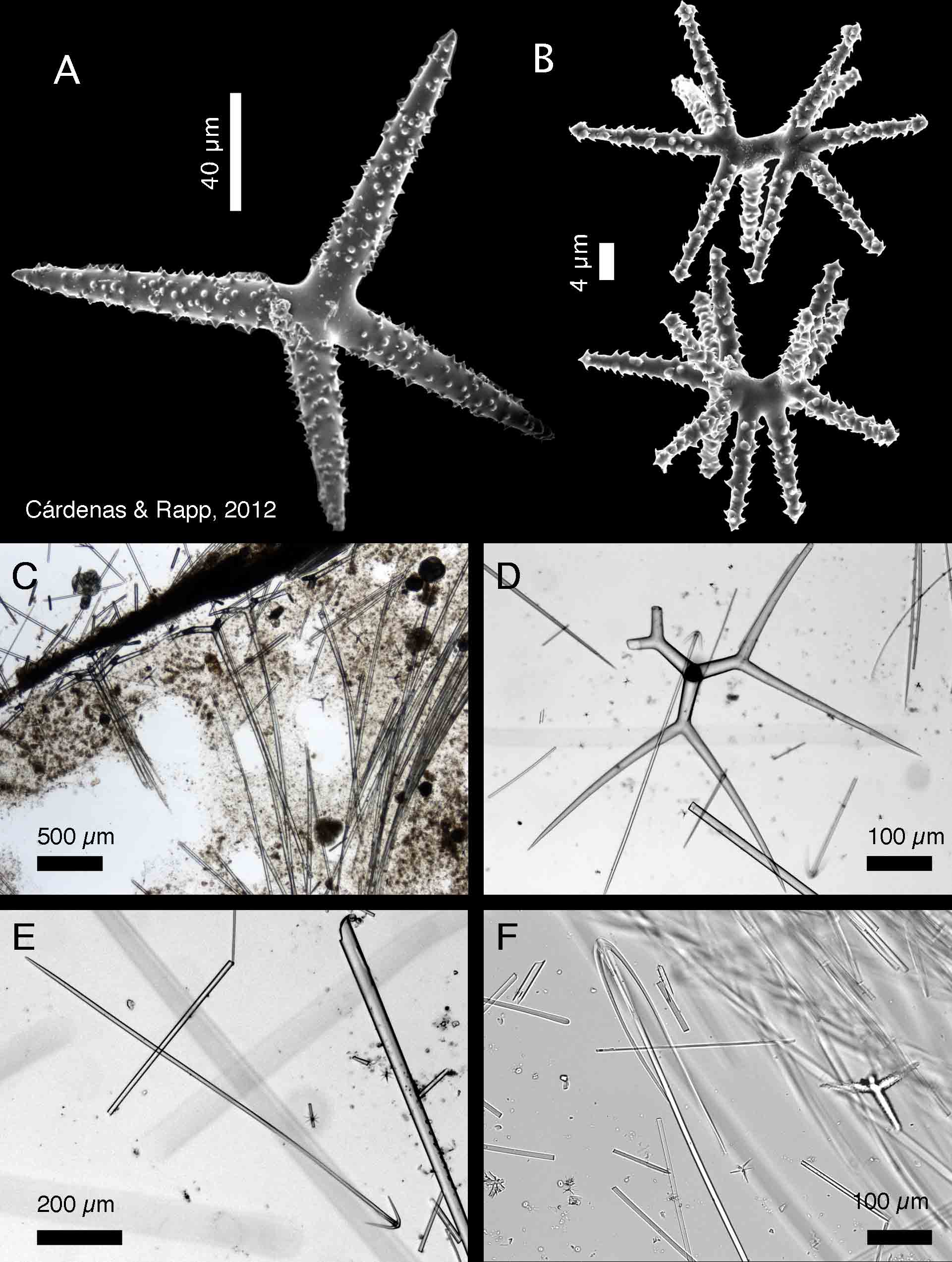Morphological description (show/hide)
| sub-spherical, small (2.5 x 2 cm) | | brown | | brown | | single, no sieve. | | very hispid | | Radial bundles of oxeas start at the center of the specimen. Spirasters and plesiasters can be found throughout the choanosome (spirasters being much more common than plesisasters). | | Triaenes are found only at the surface, either crossing the ectosome or supporting it. Spirasters are abundant in the ectosome. The roots are made of bundles of oxeas and anatriaenes and they originate in the central part of the sponge. Anatriaenes are especially common in the basal part, always crossing the ectosome. | | (a) oxeas, straight, length >3750 µm; width: 20-40 µm. (b) dichotriaenes, rarely modified to orthotriaene or plagiotriaene, straight rhabdome or slightly bent, rhabdome length >4165 µm; rhabdome width: 20-47.2-70 µm; protoclad length: 60-132.4-210 µm; deuteroclad length: 240-480.5-850 µm. (c) anatriaenes I, common, straight rhabdome with a rather blunt tip, rhabdome length: 920-1257.5-1750 µm (N=22); rhabdome width: 5-9.0-15 µm; clad length: 45-87.8-130 µm. A more or less developed swelling can be found above the cladome. (d) anatriaenes II, common, very long and flexuous rhabdome, length between 2000 µm to more than 3600 µm; rhabdome width: 10 µm; very long clades running somewhat parallel to the rhabdome, giving to the anatriaene a closed-umbrella shape, in some cases the cladome is aborted and only an inflated tip is present, clad length: 40-279.7-548 µm (N=16). (e) protriaenes, absent in this specimen. | | (f) spirasters, strongly spined, length: 25.0-36.6-57.3 µm. (g) plesiasters, 4-6 actines, strongly spined or more rarely smooth, actine length: 60-84.3-100 µm; actine width: 13-16 µm. |
|
Reference (show/hide)
| Cárdenas, P., Xavier, J.R., Reveillaud, J., Schander, C. & Rapp, H.T. (2011) Molecular phylogeny of the Astrophorida (Porifera, Demospongiae) reveals an unexpected high level of spicule homoplasy. PLoS ONE, 6, e18318. |
|





